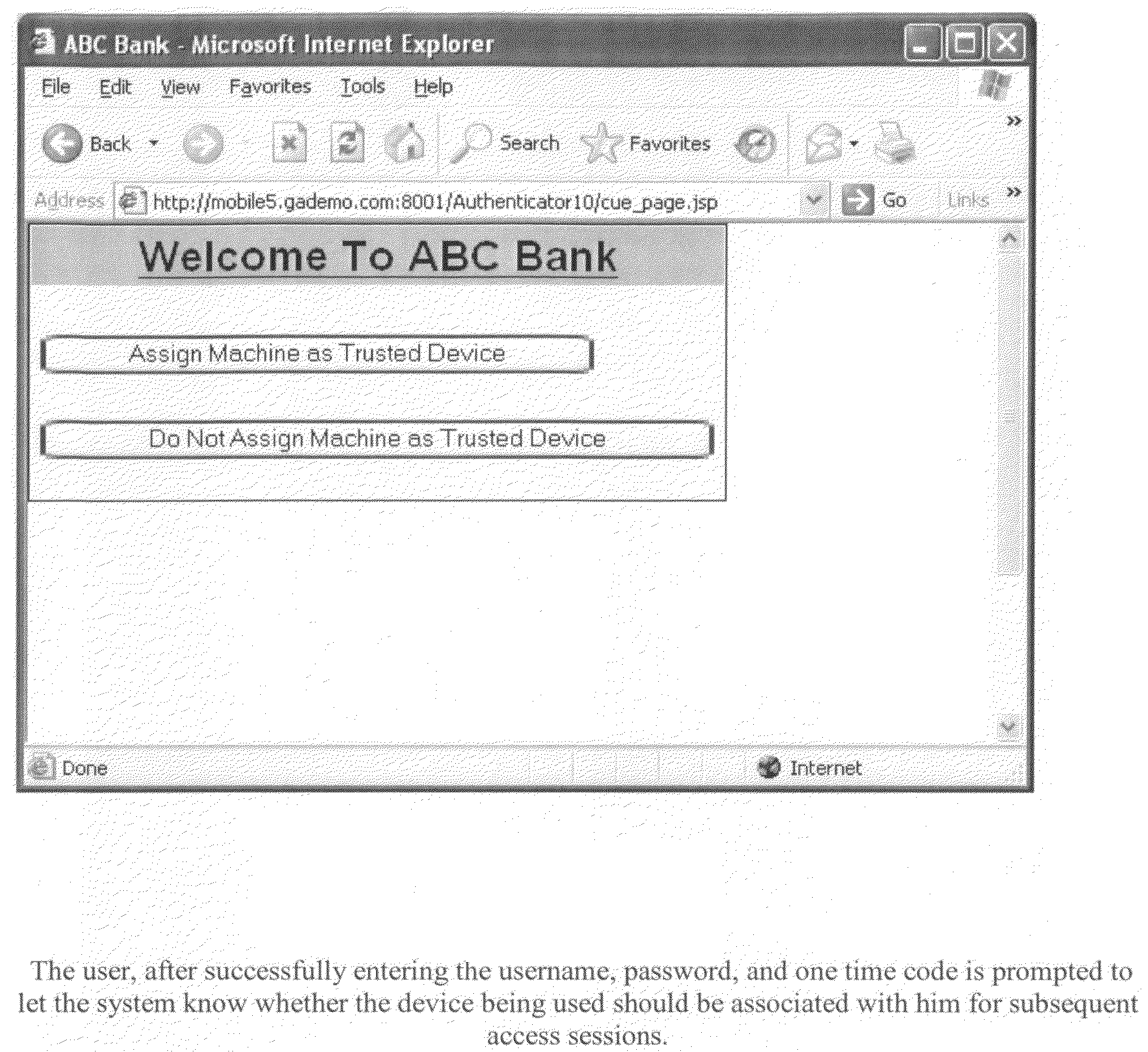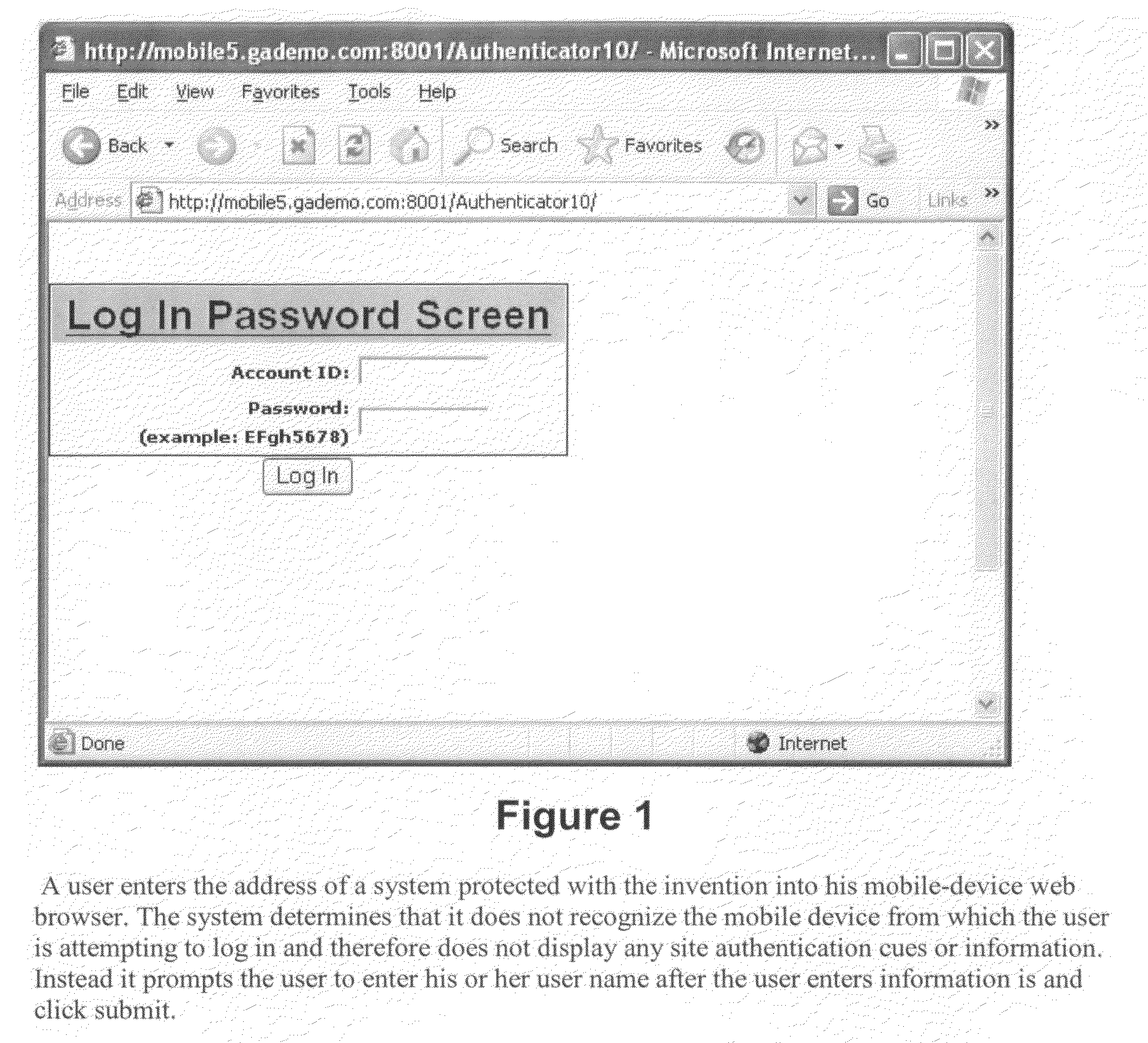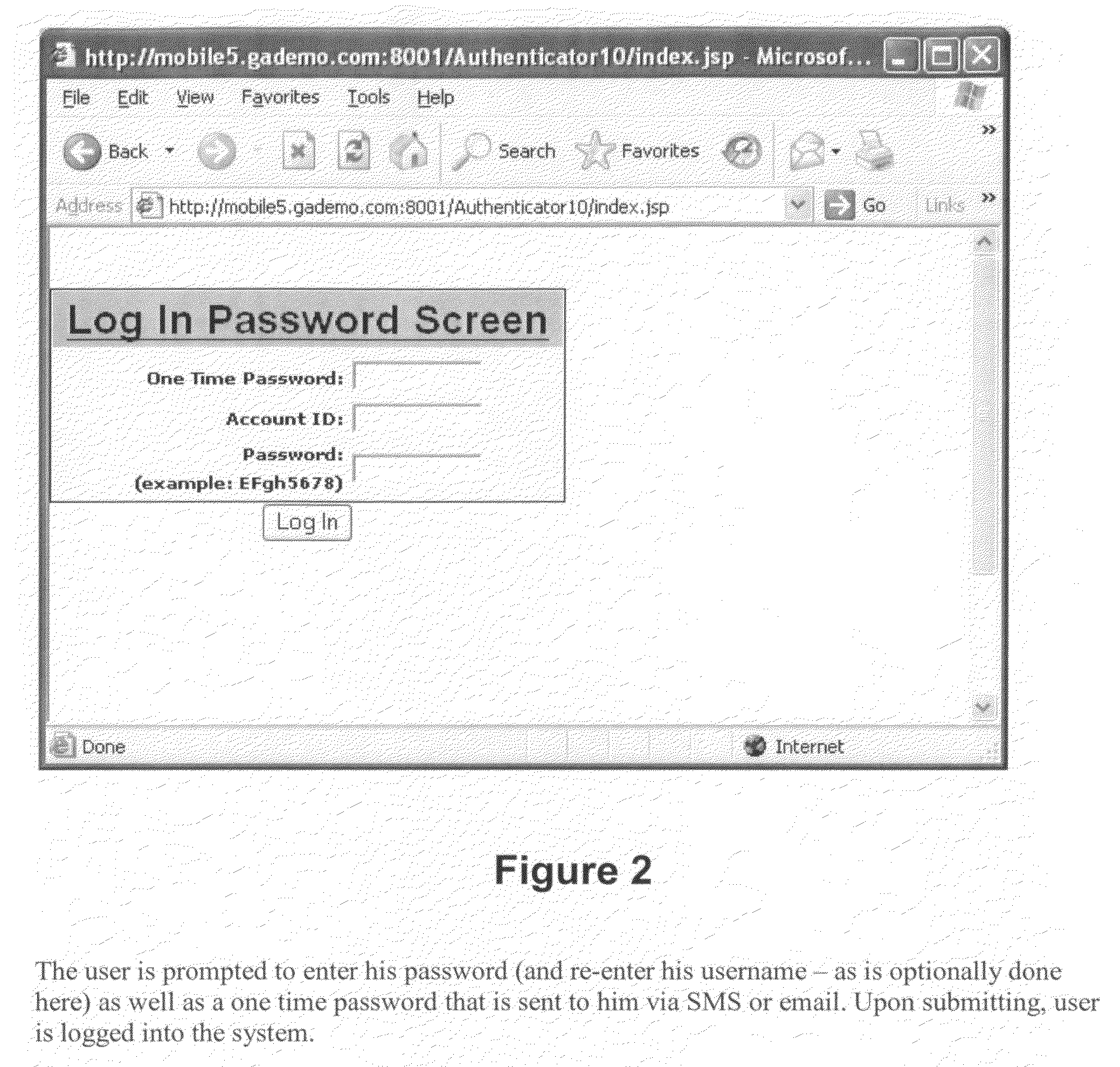System and method for augmented user and site authentication from mobile devices
a mobile device and user authentication technology, applied in the field of system and method for augmented user and site authentication from mobile devices, can solve the problems of unauthorized parties gaining inappropriate access to sensitive resources, extremely impractical, and still using passwords as authentication methods,
- Summary
- Abstract
- Description
- Claims
- Application Information
AI Technical Summary
Benefits of technology
Problems solved by technology
Method used
Image
Examples
Embodiment Construction
[0011]Among the elements of this invention are several unique components—which may be implemented independently or together. Theses unique components provide site authentication optimized for mobile access so that users (whether human or machine) may access online systems from their mobile devices without users from falling prey to phishing (including classic phishing as well as pharming and related attacks), and other online scams. Such protections are of particular value to mobile users because while mobile access-based activities (e.g., banking from mobile devices, shopping from mobile devices, etc.) may offer users greater convenience, they nevertheless introduce serious risks of phishing and online fraud, because such handheld devices typically do not have any anti-phishing technology built in, and this deficiency—coupled with the fact that mobile websites are simpler than standard websites and therefore easier to clone—makes it easier for criminals to implement phony web sites...
PUM
 Login to View More
Login to View More Abstract
Description
Claims
Application Information
 Login to View More
Login to View More - R&D
- Intellectual Property
- Life Sciences
- Materials
- Tech Scout
- Unparalleled Data Quality
- Higher Quality Content
- 60% Fewer Hallucinations
Browse by: Latest US Patents, China's latest patents, Technical Efficacy Thesaurus, Application Domain, Technology Topic, Popular Technical Reports.
© 2025 PatSnap. All rights reserved.Legal|Privacy policy|Modern Slavery Act Transparency Statement|Sitemap|About US| Contact US: help@patsnap.com



